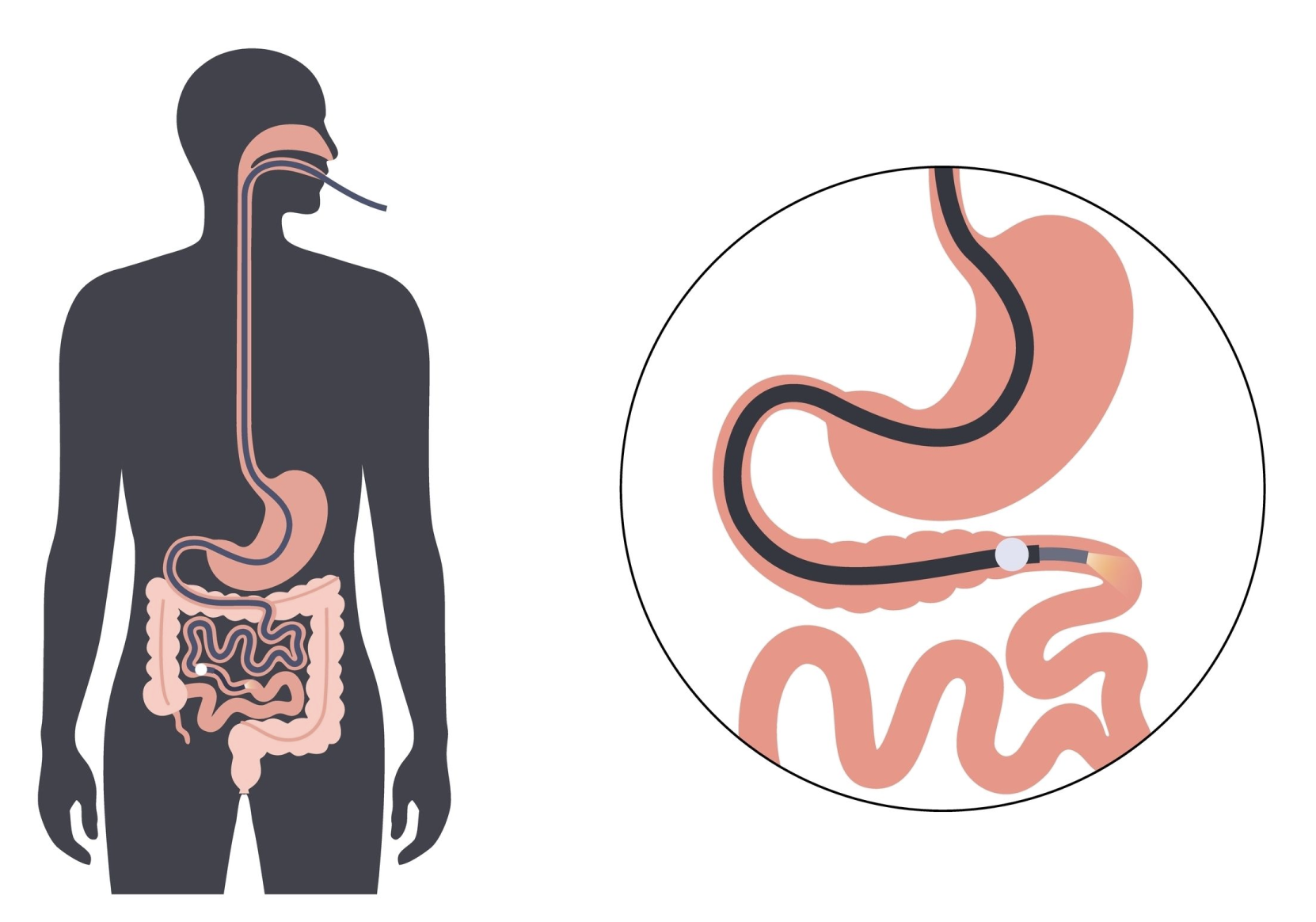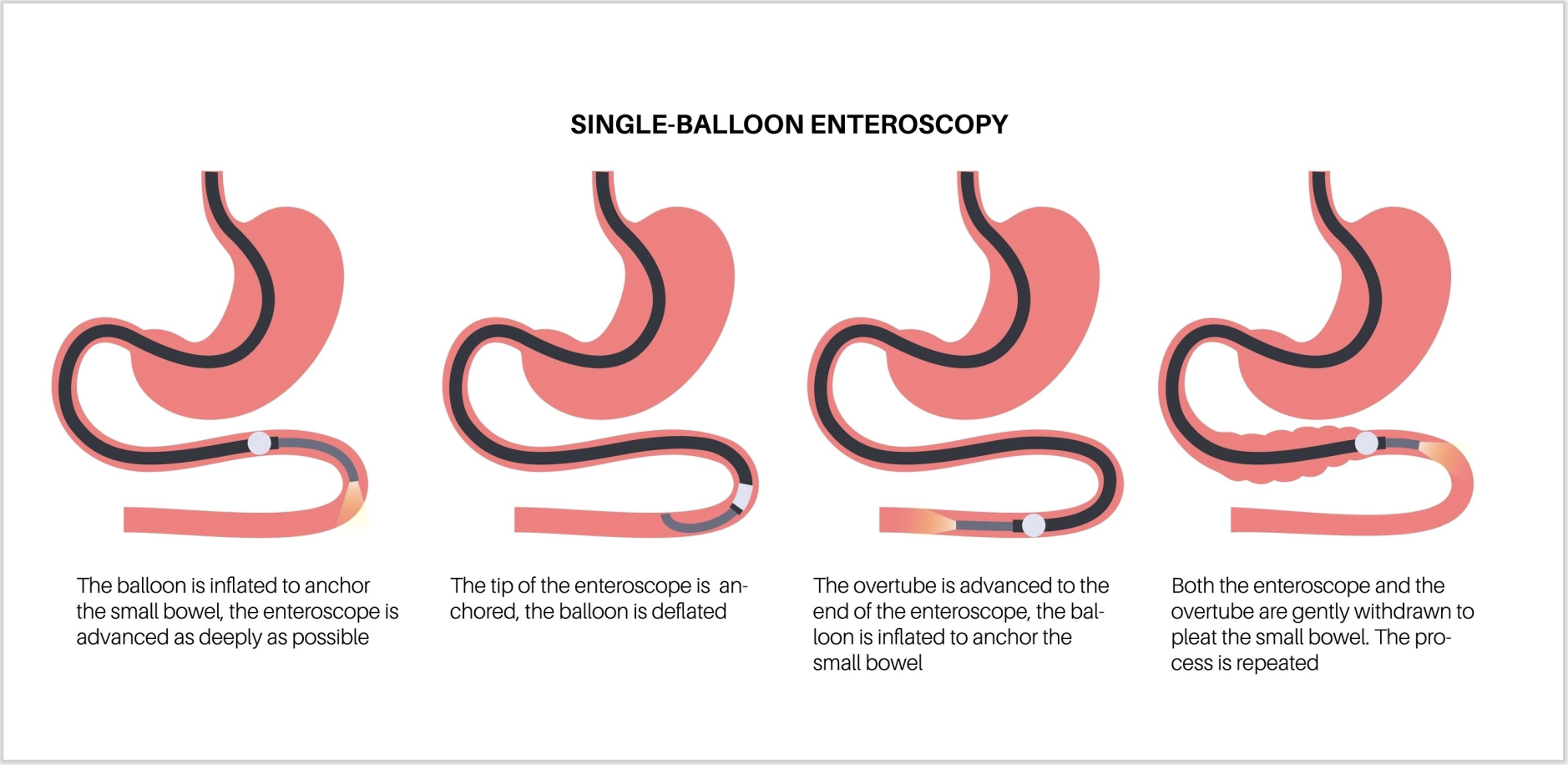
What is enteroscopy?
Device-assisted enteroscopy (DAE) or Balloon-assisted enteroscopy (BAE), sometimes also known as single-balloon (SBE) or double-balloon endoscopy (DBE), is a minimally invasive medical procedure that helps doctors diagnose and treat problems in the small intestine.
During the procedure, a thin, flexible tube with an attached camera, called an endoscope, is inserted into your body. A long, thin enteroscope (type of endoscope) is placed inside a tube, which has an external balloon which your endoscopist controls to guide the device through the small bowel. This allows the device to move forward, a little like a caterpillar bunching and reaching.
The procedure may allow sources of bleeding to be treated, polyps to be removed, or significant changes to be biopsied. It can be performed orally (antegrade approach) or anally (retrograde approach) and this is decided based on the expected location of the issue in the small bowel.
Why is enteroscopy so important?
Enteroscopy makes it possible to diagnose or evaluate diseases within the body without making an incision. It’s commonly used to detect problems deep in the small intestine. Before this procedure was offered, some issues went undiagnosed and others required a surgeon to bring the small bowel outside the body and run a conventional endoscopy through to find the area.
Is enteroscopy safe?
Enteroscopy is generally considered safe and effective for investigating and treating problems in the small bowel. Complications are rare, and can include discomfort, bleeding, damage to the bowel or surrounding structures, or complications of anaesthesia.

When is enteroscopy advisable?
Enteroscopy is often performed after a scan or video capsule (sometimes called PillCam) has shown changes in the small bowel. A common reason for enteroscopy is to treat changes in the small bowel thought to explain small bowel bleeding or iron deficiency. It may be advised to remove polyps or biopsy changes seen on other imaging. If you have had vascular changes treated in the small bowel previously, the procedure may be advised if you have iron deficiency or bleeding in the future.
How do I prepare for the procedure?
Before the procedure, you will need to fast for six hours (with the exception of small amounts of water and black tea/coffee without milk or other additives until two hours prior). You may also need to stop taking certain medications, particularly blood thinners and diabetic medications. Your current medications should be provided to the doctor before the procedure. Your doctor may give you personalised instructions on how to prepare for the procedure. If the procedure needs to be perform from below (anal or retrograde approach) then a bowel preparation will be discussed.
What should I expect?
An enteroscopy is an outpatient procedure, which means that you can go home the same day as the procedure. It usually takes half an hour to an hour to complete. The anaesthetist may discuss sedation (like a colonoscopy) or less often a general anaesthetic. Your doctor might take images or tissue samples. Often, sites of suspected bleeding may be treated with cautery or clips.
What happens after?
After the procedure, you will need to rest for a short period of time before you can go home. You may experience some mild discomfort or bloating for a few hours after the procedure, which often resolves after passing wind. Your doctor will give you specific
instructions on what to do after the procedure.
